"Because art is able to defeat man in those
things in which man is defeated by nature"
[H Zeising]
things in which man is defeated by nature"
[H Zeising]
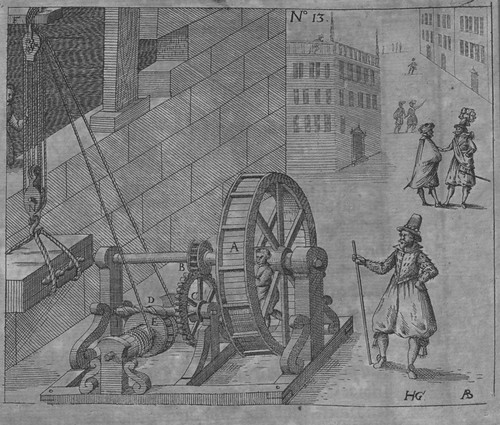



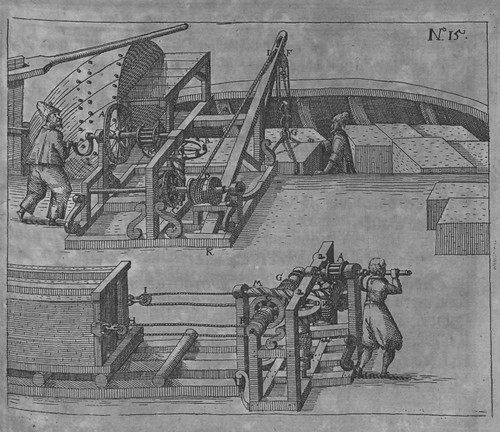





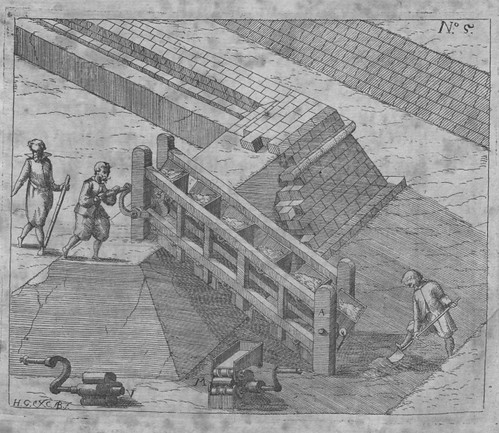
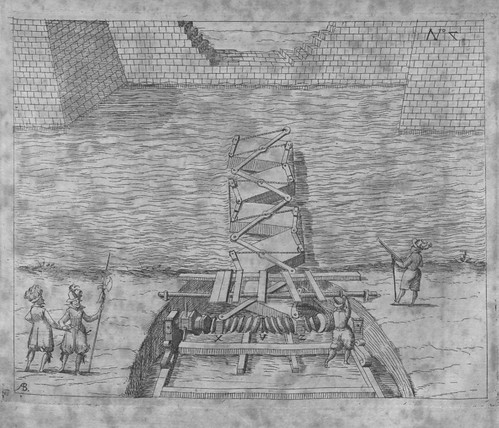

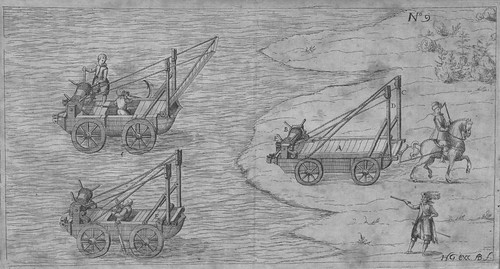



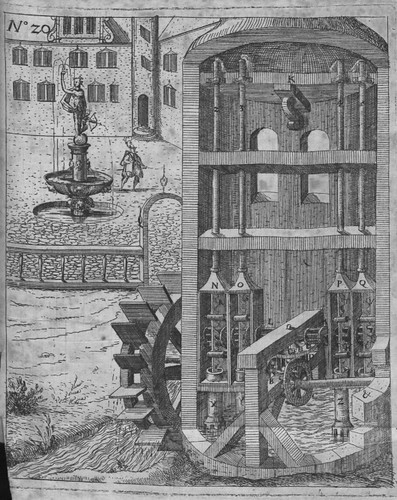


'Theatri Machinarum..' (?1612-1614) by Heinrich Zeising is available from the Kinematic Models for Design Digital Library at Cornell University. The site has had a redesign since I last visited and now includes an "open collection of mechanical models and related resources for studying and teaching the principles of kinematics" wikipage.
Little is known about Zeising. His 'Theatri Machinarum' belongs to the tradition of technical machine manuals (known as the 'Theatre of Machines') published in the 16th to 18th centuries. At least part of this book was copied/modified from earlier works by Besson, Zonca and Ramelli which in turn were influenced by classic publications by Agricola and Vitruvius.
The engravings in Zeising's work (by Andreas Bretschneider and the publisher Henning Grosse, with some after designs by Zeising himself) do not have the same artistic quality as those in the earlier machine manuals. However, this reduced the printing costs, and, as Zeising included more in the way of explanatory text, he played a significant role in circulating and promoting the technological designs of the Renaissance - at times a little fanciful but always inspirational - in Germany. His manual includes engineering designs for book presses, water wheels, fountains, complex rope and pulley systems for many weight lifting systems, mobile bridges and rampart scaling devices, among others.
- The machine posts in the archives display many examples from the major architecture - engineer - fortifications specialists that contributed to the 'Theatre of Machines' genre, together with many background reading links.
- There are precious few references to Zeising online. See: one, two, three and, most significantly, George Goodall's posts mentioning Zeisging.
- George's 'Diffusion of the Theatrum Machinarum' machine gallery at Facetation.
- UPDATE: (July '09): HAB have uploaded what appear to be two sections of 'Theatri Machinarum' (probably 2 from the 6 George mentions in the comments below). The Cornell version is better image quality, although I have not had a close look at these new books: ONE, TWO



















5 comments :
I've been following you for a while and just want to say how much I love your blog. What I really want to know is where the hell do you get this stuff? - it's fantastic!!
i love your blog!!
great great great work, keep on!!
greatings from barcelona!
Ahh... the mysterious H.Zeising. One of the most interesting things about his books is that they are small compared to similar works! Here's some material from my dissertation -- in progress -- that will ultimately be relegated to an appendix:
Heinrich Zeising (1613): The mercenary
Heinrich Zeising remains a mystery1. Very little is known about his life. He worked in Leipzig as a copper engraver. He is most famous for the book of machines but he also may have been involved with a collection of animals and allegorical figures printed by Abraham Lamberg.
Theatrum machinarum
Zeising's Theatrum machinarum proved to be a very popular addition to the genre. Instead of a single book it was released a series of six different books, each with its own title page and forward. They were released over a period of three years. The first book is perhaps the most interesting. The figures are copied directly from the works of Besson, Ramelli, and Zonca but Zeising expands them in a number of ways. He both translates the original text and provides additional commentary on the works. He also gives additional guidance by including index letters in the plates. Zeising also groups the various plates together thematically. The printing presses of Zonca and Besson, for example, are presented in sequential order.
Perhaps the most interesting aspect of Zeising's presentation is his blatant copying of earlier authors and his reimagining of some of the plates. He often provides details that weren't included in the original. In some cases he alters the setting or alters the viewpoint completely. The most interesting addition of many of the plates is the inclusion of some sort of supervisor. These figures are perhaps intended to enable the reader to insert himself into the scene. Prior (2003) in borrowing from McKenzie (1999) notes that certain works may contain guidance on how they should be interpreted and understood. Referring to science, he notes that articles, papers, and text books actually construct the image of science. A similar process may have been at work in the theatrum machinarum. Zeising distorts the perspective and shifts the focal point of the plates from the machines to the onlookers: gentlemen who have some sort of commercial interest in the operation. While Besson's work is about the machine, Zeising's is about the investor.
The other interesting aspect of Zeising's work is evident in the succession of books. The first book is of relatively high quality. Although the format is considerably smaller than the small folio size of the earlier books, the quality of the printing and etching is quite good. The text includes printed marginalia and the plates demonstrate considerable attention to detail. The quality of both text and plates degrades rapidly as the series of works continues. This regression may hold important clues for the operation of the books of machines as a genre. Zeising's work was to have some influence on future generations of machine book authors. Some of the innovations introduced by Zeising were to be adopted by later authors such as Böckler.
Thanks very much George.
I kind of assumed the "supervisor" additive owed its origin to the baroque artistic aesthetic; one often sees a gesticulating character, implying a dynamic atmosphere or movement, particularly in outdoor scenes such as the historical garden engravings. That would be in keeping with the investor/commercial angle too I guess.
Jan Lazardig provides some more thoughts on Zeising's supervisors in essay entitled "The machine as spectacle: Function and admiration in seventeenth-century perspectives on machines":
"...not only the expert engineer, together with the financier (identifiable as 'aristocratic' by his Spanish court dress) inspect the machine. A noble audience appears to enjoy the divertissement and seems to have accidentally noticed the machine. They approach out of curiosity and admire the machine's performance. The point gesture of (mostly mail) hands stands out. The hands point not to the machine as a whole but into the machine's interior, thus emphasizing and explaining the technical apparatus." pp.156-158
Post a Comment
Comments are all moderated so don't waste your time spamming: they will never show up.
If you include ANY links that aren't pertinent to the blog post or discussion they will be deleted and a rash will break out in your underwear.
Also: please play the ball and not the person.
Note: only a member of this blog may post a comment.